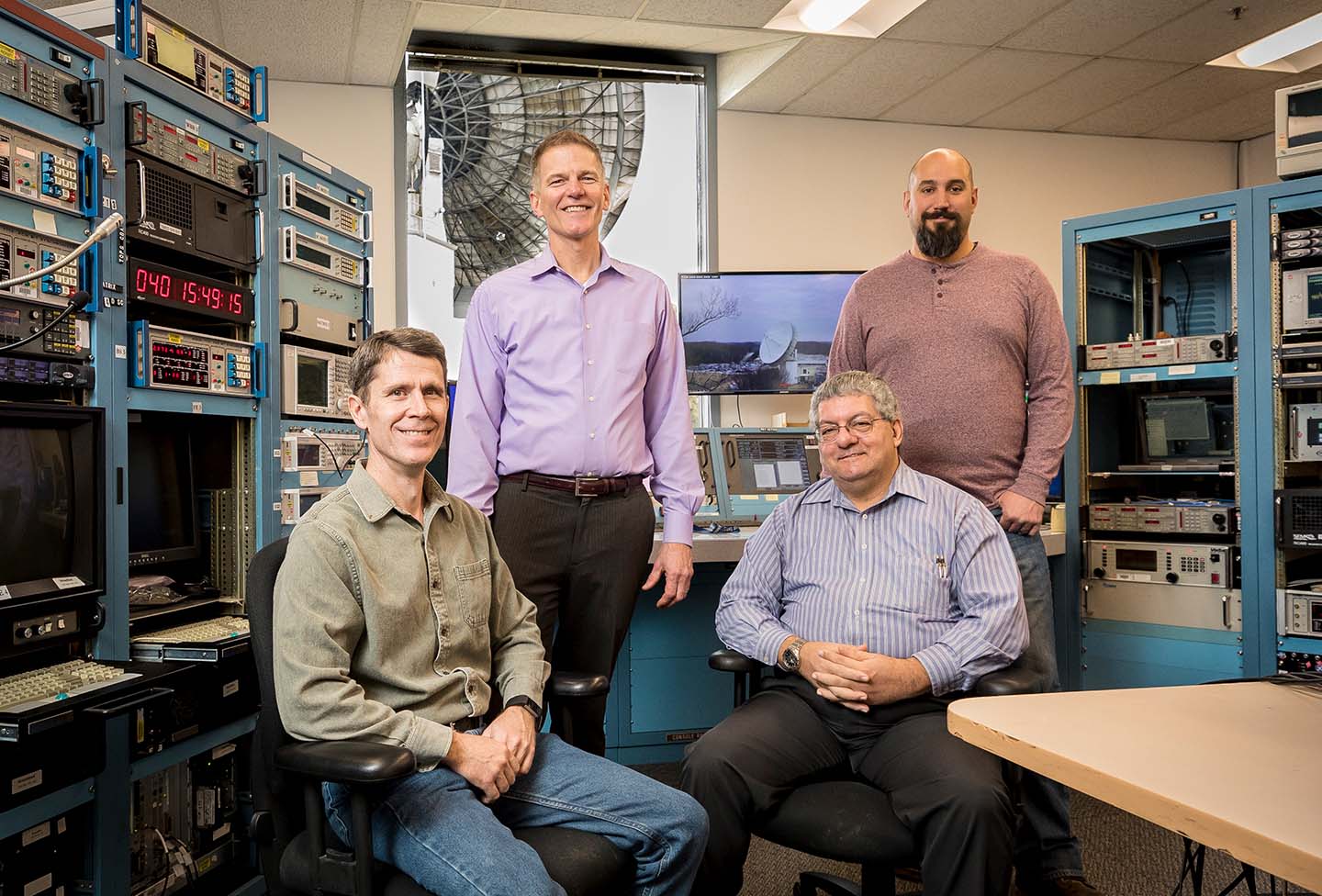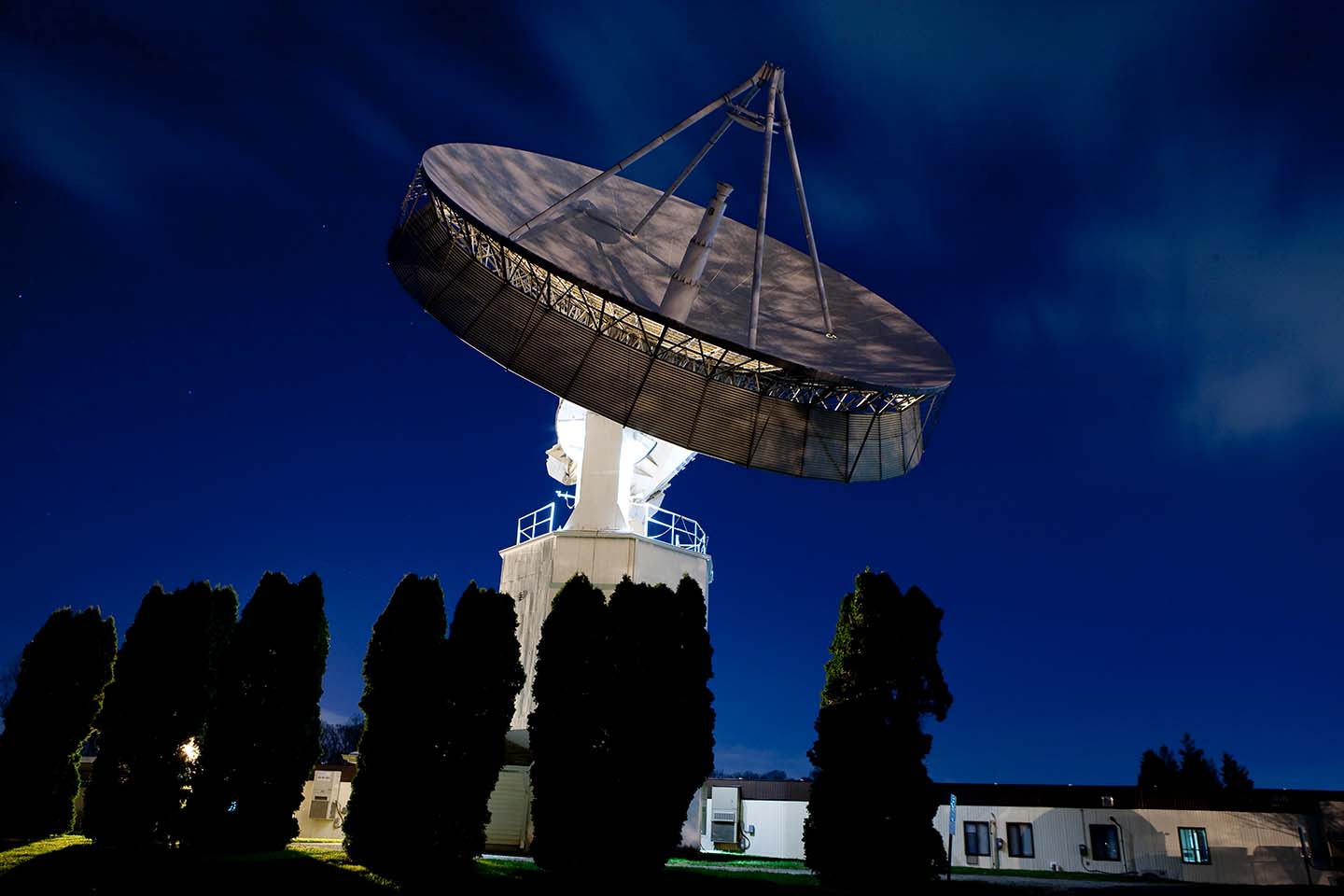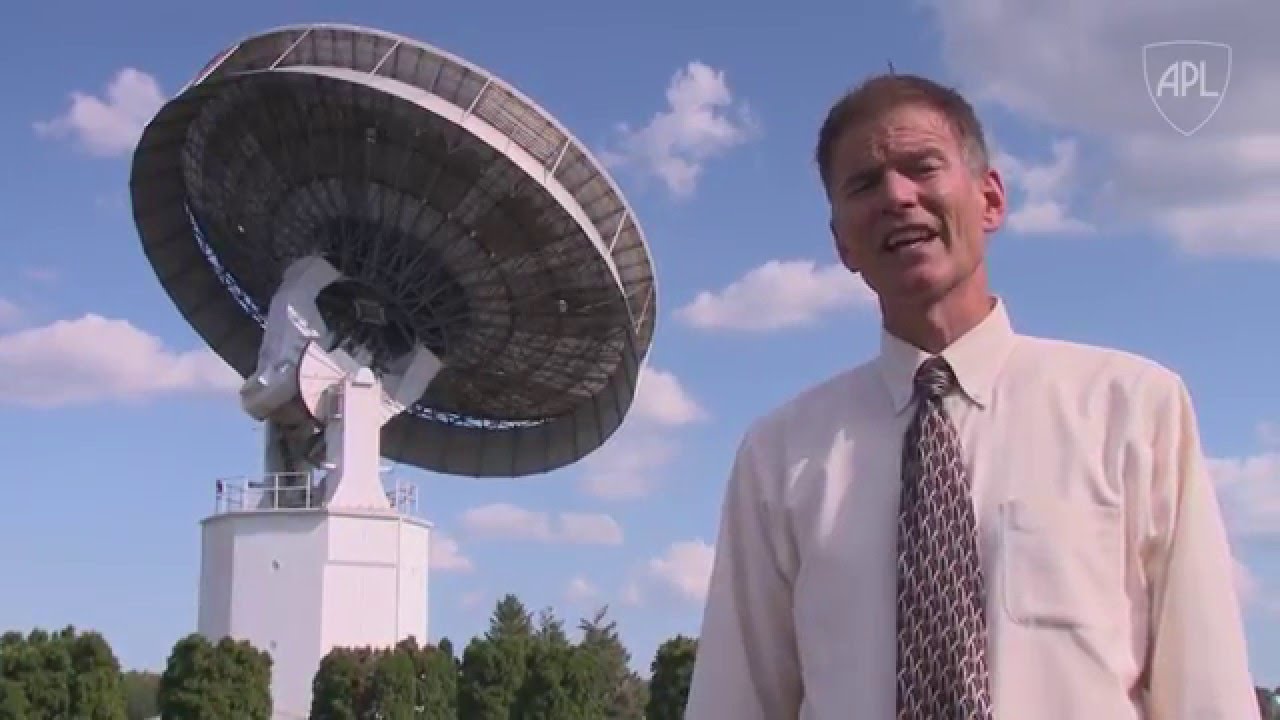Answering the Call
On Jan. 26, after learning that an amateur astronomer may have found IMAGE, mission managers at NASA Goddard Space Flight Center in Greenbelt, Maryland, sought help from several ground stations around the country — including the SCF — to not only locate and track the satellite but also to downlink and store any data it might be transmitting.
This was no simple task. Not only had satellite communications technology changed significantly over the past decade, NASA had previously decommissioned the IMAGE Science and Mission Operations Center. The Goddard team provided what’s known as “nominal sequence of events codes,” the essential files that told the stations how to communicate with the spacecraft. But something was missing — specifically, the last bit of information needed to lock onto IMAGE’s stream of telemetry/housekeeping data.
“For most operating spacecraft, this information is readily available online,” said Tony Garcia, SCF lead engineer in SES. “But IMAGE had been ‘gone’ for so long that the information on its RF [radio-frequency] and telemetry decoding parameters wasn’t readily available.”
The SCF team dialed its large 18-meter (60-foot) dish toward IMAGE’s predicted location and quickly picked up a signal. But the real work came later; Dove spent a few hours configuring the facility’s data-system loggers, and for roughly eight hours over Jan. 29–30, Garcia adjusted the system parameters, fine-tuned the bit rate and electronically “hunted and pecked” for IMAGE until he got a lock on the spacecraft’s telemetry signal at 2:15 p.m. EST on Jan 30.
Telemetry files then began flowing into the SCF computers. Once Dove verified that the files contained actual spacecraft data, he sent them to the NASA team at Goddard — which, in turn, confirmed that the data was indeed from IMAGE.
“It wasn’t easy,” Dove said. “We worked our tails off to achieve telemetry lock. The first tries weren’t successful, but we didn’t give up. Once Tony performed his magic and we locked up, we continued to collect data for hours.”
The SCF team configured the station to conduct autonomous “lights out” contacts and has been receiving a strong signal from IMAGE ever since. As of Feb. 14, the APL station had made contact with the spacecraft 22 more times, collecting and providing NASA with more than 57 hours of IMAGE telemetry data.
NASA has used that data to learn that IMAGE is generally (and surprisingly) healthy. Aside from investigating what caused the decade-long dropout, the IMAGE team will also see if it can do more than just listen to the spacecraft, and talk back to it.
“Establishing the identity of IMAGE and gathering data from the spacecraft has drawn on a wide group of scientists and engineers working together across NASA as well as with our partners,” said Richard Burley, former ground system manager and mission director for IMAGE at Goddard. “We don’t yet know whether we’ll be able to communicate directly to IMAGE, but it’s a fascinating puzzle to try to solve.”
“We love a good technical challenge, and IMAGE gave us a chance to show what incredible things the APL team and facility can do,” Dove added. “If NASA needs our help again, we’re ready to go.”


